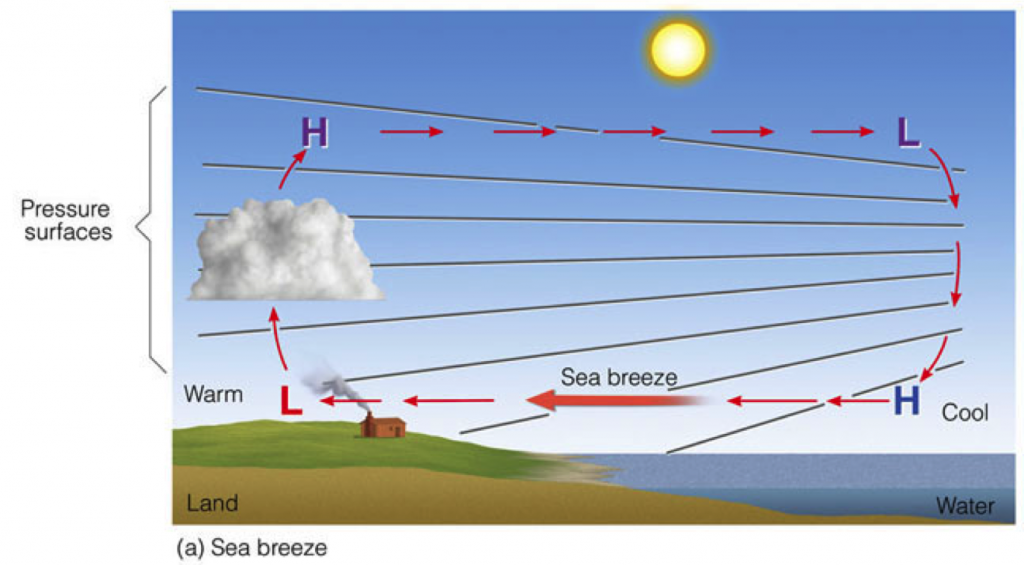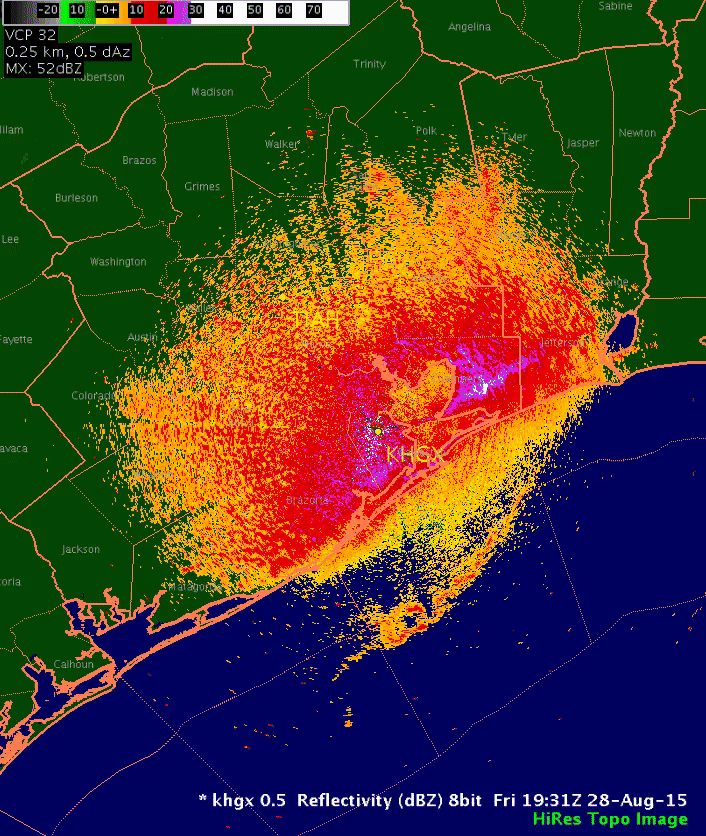If you’ve lived in Houston–or any other place near a large body of water, for that matter–you’ve heard the term “sea breeze” quite a lot, especially during the summer. We often discuss the sea breeze in relation to those scattered, sometimes intense, thunderstorms we saw pop up over the region since Sunday. But what is a sea breeze, and how does it work?
What is a sea breeze?
A sea breeze is a wind that occurs where the land and the ocean meet. During the day, the sun heats up both the land and the ocean (in our case, the Gulf of Mexico). However, the land heats up much more quickly than the ocean (just think of how long it takes to boil a pot of water). This difference in heating creates differences in air pressure–the hot air over the land creates an area of low pressure at the surface, and the cooler air over the sea becomes an area of high pressure, by comparison:

This pressure difference creates a wind circulation, per the Pressure Gradient Force, which causes air to move from an area of high pressure to an area of low pressure, as wind. This wind acts as a sea-breeze “front”, which is similar to a mini-cold front. This front can sometimes be seen on radar:

If the atmosphere is unstable, this front can lift moist air, that then condenses and forms slow-moving thunderstorms. While these storms are rarely severe, they can cause local flooding, strong winds, and frequent lightning. As long as the upper level winds don’t counteract the sea breeze, it can repeat, day after day, bringing in moisture and scattered storms. At night, this whole process can reverse–the land cools more quickly than the ocean, causing high pressure over land and low pressure over the Gulf, creating a land breeze.
The air brought in via the sea breeze also has another significant impact on our weather. The moist Gulf air increases our dew points and humidity, so those lucky enough to feel the cooling effect of a shower or thunderstorm may unfortunately instead experience a more humid day, and a higher heat index. The unpredictability and occasionally random nature of these scattered storms makes it nearly impossible to know which you may feel on any given day! It surely keeps our weather interesting through summer though.
Really interesting!!! Please keep these explainers coming!! This is one of many things that separates Space City Weather from everyone else.
A great explanation of the cause and effects of a sea breeze.
Really interesting – thank you for the information!
The sea breeze makes it possible for me to walk 2.5-3 miles around sunset. I wouldn’t even try in the still of the ultra-muggy early morning air around sunrise.
How I hate Houston summers!